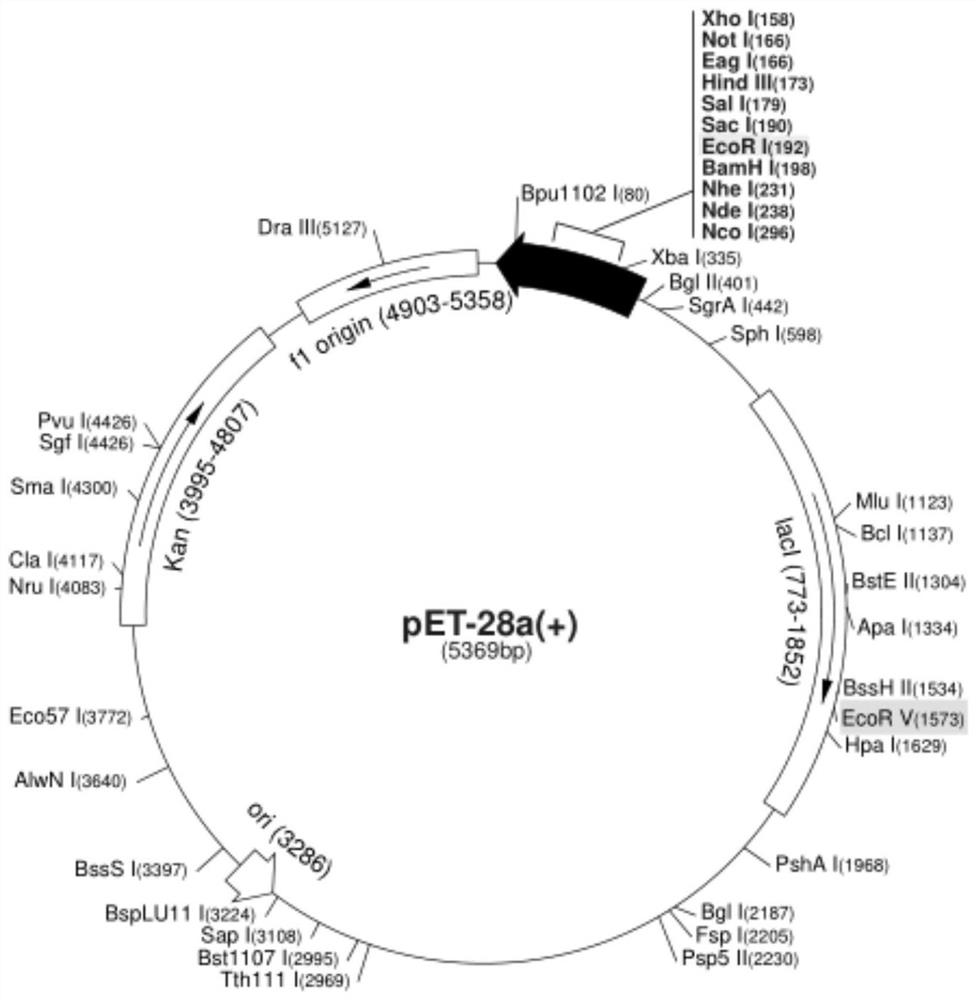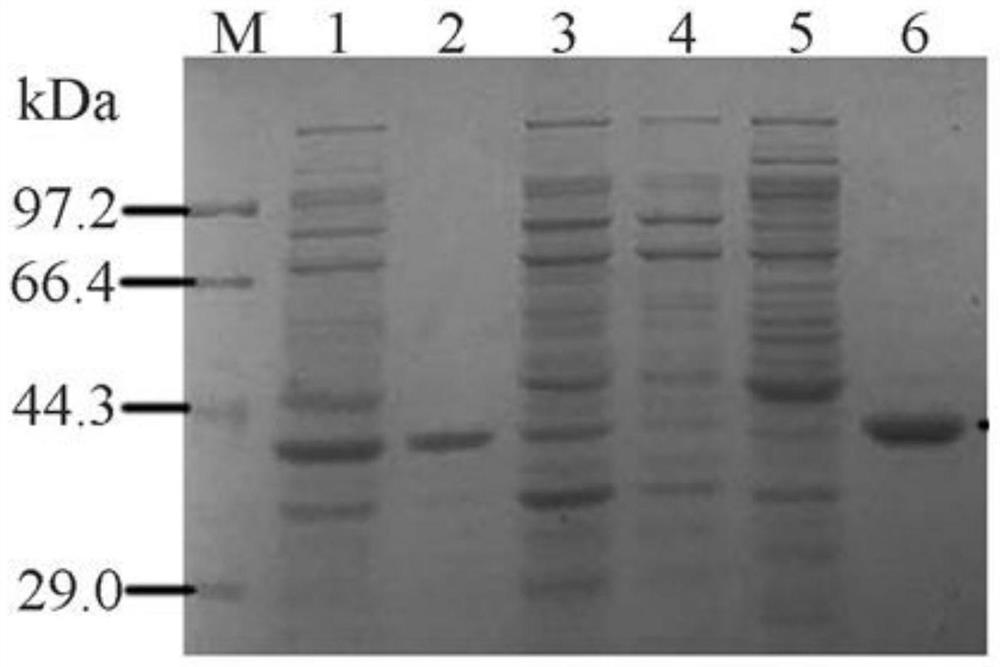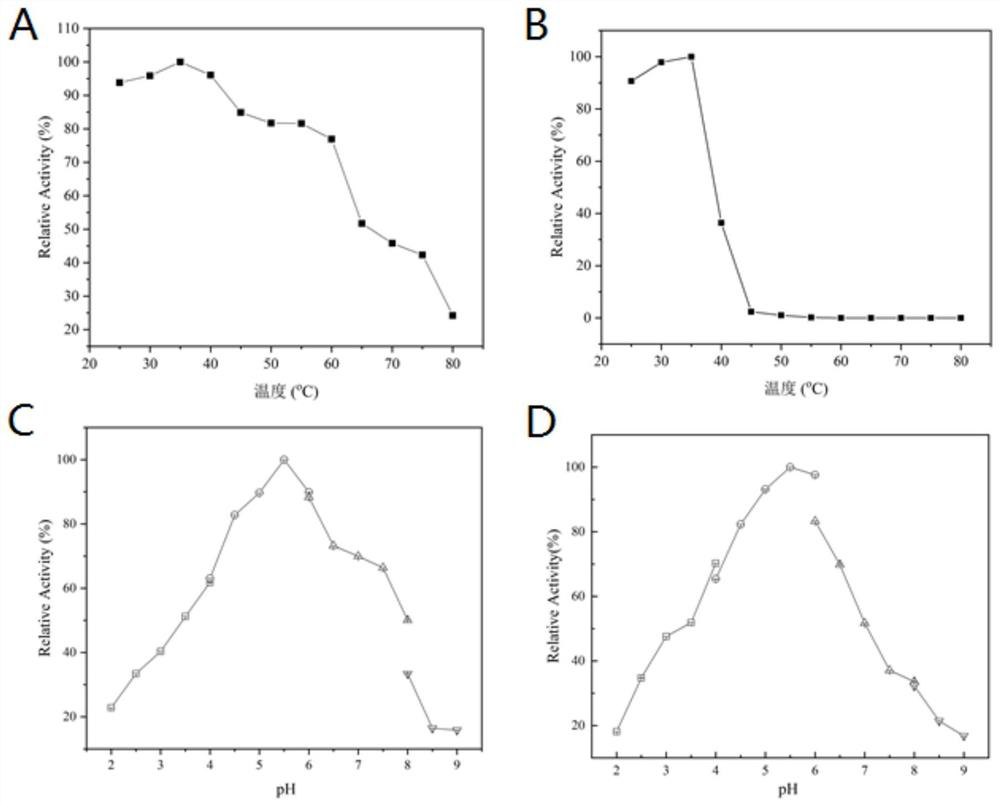A kind of persistent endocellulase and its coding gene and application
An endocellulase, sustainable technology, applied in application, genetic engineering, plant genetic improvement and other directions, can solve the problems of difficult to meet industrial production, high cost, lack of efficient hydrolysis capacity, etc., to achieve wide application potential, improve transformation rate effect
- Summary
- Abstract
- Description
- Claims
- Application Information
AI Technical Summary
Problems solved by technology
Method used
Image
Examples
Embodiment 1
[0026] Example 1 Cloning and expression of persistent endocellulase
[0027] 1. Target gene cloning
[0028] (1) Primer design
[0029] The present invention selects a gene SmCel5A predicted to be an endocellulase as a research object, and its nucleotide sequence is SEQ ID NO.1.
[0030] The gene sequence of SEQ ID NO.1 is expected to encode 334 amino acids, and the amino acid sequence of the encoded cellulase precursor protein is shown in SEQ ID NO.2. Through the online analysis service of InterPro software, the predicted 25 amino acids at the N-terminal of the protein are Signal peptide sequence (MRLKRKLALIGCILSLFLSSTSTFA), after removing this signal peptide sequence, the mature protein of cellulase is obtained, its amino acid sequence is shown in SEQ ID NO. shown in SEQ ID NO.3.
[0031] According to the sequence characteristics of SEQ ID NO.1, as well as the signal peptide sequence and mature protein sequence characteristics of the expressed protein corresponding to the...
Embodiment 2
[0046] Example 2 Purification of Persistent Endo-Cellulase
[0047] The engineered bacteria induced by IPTG in Example 1 were centrifuged to collect bacterial cells, resuspended with ultrasonic buffer, and then ultrasonically disrupted. The resulting fragmented liquid was centrifuged at 12,000 g for 15 min to obtain a supernatant, which was subjected to Ni column affinity chromatography. For specific operations, see Protein According to the purification operation manual, the purified continuous endo-cellulase SmCel5A can be obtained.
Embodiment 3
[0048] Example 3 Properties of recombinant persistent endocellulase
[0049] (1) Cellulase activity of hydrolyzing sodium carboxymethyl cellulose, filter paper and phosphoric acid swollen cellulose
[0050] Using sodium carboxymethyl cellulose, filter paper or phosphoric acid swollen cellulose as a substrate, the continuous endo-cellulase SmCel5A of the present invention is used to react, and then the amount of reducing sugar generated in the reaction system is detected to analyze the fiber The activity of the enzyme is determined by ion chromatography or TLC to detect the species of reducing sugars. The amount of reducing sugar produced was measured by the DNS method. The protein concentration was determined by Coomassie brilliant blue detection method.
PUM
 Login to View More
Login to View More Abstract
Description
Claims
Application Information
 Login to View More
Login to View More - R&D
- Intellectual Property
- Life Sciences
- Materials
- Tech Scout
- Unparalleled Data Quality
- Higher Quality Content
- 60% Fewer Hallucinations
Browse by: Latest US Patents, China's latest patents, Technical Efficacy Thesaurus, Application Domain, Technology Topic, Popular Technical Reports.
© 2025 PatSnap. All rights reserved.Legal|Privacy policy|Modern Slavery Act Transparency Statement|Sitemap|About US| Contact US: help@patsnap.com



